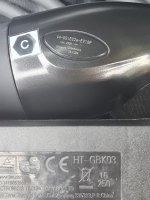Some inverters can already take the V2L output and happily switch it through to the load, use it to charge a battery, or both. Some can also blend AC-in power with solar power, meaning that you can use solar power in preference to battery power or AC-in power. It will be thinking of V2L power as utility power, and often you want to minimise the use of that.
There are also a few inverters with two AC inputs, usually designed for grid and generator connection. The V2L should be able to plug into the generator input. Generators often have a power limit, so these inverters often have a setting to limit the generator (now V2L) power. You can use this to prevent overloading of the V2L system, and/or (perhaps best with a little clever automation) going easy on the V2L power if the car's SoC gets a bit low.
In the popular moderately priced (and moderate performance) Axpert inverter series, there are Duplex and Twin models. The Twin models have two AC load ports; this is not useful here. But the Duplex models have two AC in ports; those would be the ones to look for if you want to integrate V2L. I've not seen or heard about any Duplex models, I've only noticed them on the manufacturer's web site. I'm sure that other manufacturers have similar models and different naming conventions.

